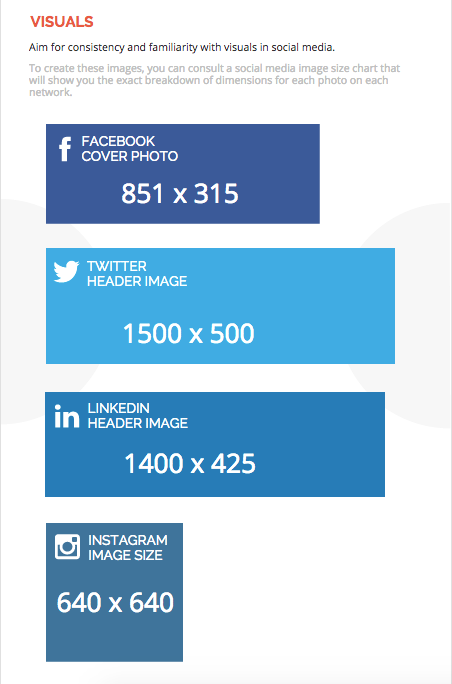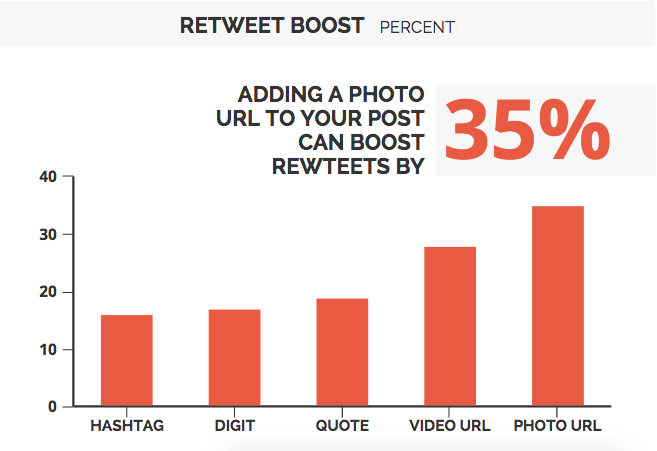When I went rock climbing for the first time, I had no idea what I was doing. My friends and I were complete newbies about ropes and rappelling and every other bit of jargon and technique that goes with climbing. We saw others doing it spectacularly well. We were thrilled at the thought of reaching the top of the climbing wall; we had no idea how to get there.
I’d imagine that a social media marketing plan could feel the same way.
If you’re starting from square one, it might feel equal parts thrilling and overwhelming. You know what you want to do and why. You can see that others have climbed the social media mountain; you’ve got few ideas how to get there yourself.
It’d help to have a plan.
We’ve shared before about different parts of a social media marketing plan—the data and research and personal experience behind what works on social media. Now we’re pleased to put it all into a cohesive, step-by-step blueprint that you can use to get started. If you need a social media marketing plan, start here.
Oh, and our friends at online infographic maker Venngage were kind enough to wrap all that follows into a comprehensive infographic that’s easy to keep, share and reference:

Social media is as homogenous from network to network as soda pop is from brand to brand. Sure, it’s all social media, but Google+ and Twitter might as well be Mountain Dew and Pepsi. Each network is unique, with its own best practices, own style, and own audience.
You should choose the social networks that best fit your strategy and the goals you want to achieve on social media.
You don’t have to be on them all—just the ones that matter to you and your audience.
Some things to consider that can help you choose not only which social networks to try but also how many to try.
Time – How much time can you devote to a social network? Plan on at least an hour per day per social network, at least at the start. (Once you get going, tools like Buffer can help you save a bit of time.)
Resources – What personnel and skills do you have to work with? Visual social networks like Pinterest and Instagram require images and photos. Social networks like Google+ emphasize quality content. Do you have the resources to create what’s needed?
Audience – Where do your potential customers hang out? Which social network has the right demographics?
For the latter part of this decision, you can reference the audience research and demographics from surveys like those conducted by Pew Research. For instance, Pew has complete data, collected last fall, of the demographics for Facebook, Twitter, Instagram, Pinterest, and LinkedIn. Here is a side-by-side comparison of Facebook and Twitter demographics.
Social media is as homogenous from network to network as soda pop is from brand to brand. Sure, it’s all social media, but Google+ and Twitter might as well be Mountain Dew and Pepsi. Each network is unique, with its own best practices, own style, and own audience.
You should choose the social networks that best fit your strategy and the goals you want to achieve on social media.
You don’t have to be on them all—just the ones that matter to you and your audience.
Some things to consider that can help you choose not only which social networks to try but also how many to try.
Time – How much time can you devote to a social network? Plan on at least an hour per day per social network, at least at the start. (Once you get going, tools like Buffer can help you save a bit of time.)
Resources – What personnel and skills do you have to work with? Visual social networks like Pinterest and Instagram require images and photos. Social networks like Google+ emphasize quality content. Do you have the resources to create what’s needed?
Audience – Where do your potential customers hang out? Which social network has the right demographics?
For the latter part of this decision, you can reference the audience research and demographics from surveys like those conducted by Pew Research. For instance, Pew has complete data, collected last fall, of the demographics for Facebook, Twitter, Instagram, Pinterest, and LinkedIn. Here is a side-by-side comparison of Facebook and Twitter demographics.

Step 2: Fill out your profiles completely
One of our monthly checks here at Buffer is to visit each of our social media profiles and make sure that our avatars, cover photos, bio, and profile info is up-to-date and complete. It’s a key part to our social media audit. A completed profile shows professionalism, cohesive branding, and a signal to visitors that you’re serious about engaging.
Profiles will require two parts: visuals and text.
For visuals, we aim for consistency and familiarity with the visuals we use on social media. Our avatar on Twitter matches our avatar on Facebook. Our cover photo on Google+ is similar to our cover on LinkedIn.

To create these images, you can consult a social media image size chart that will show you the exact breakdown of dimensions for each photo on each network. For an even easier time of it, you can use a tool like Canva, which comes with prebuilt templates that set the proper sizes for you.

For text, your main area to customize is the bio/info section. Creating a professional social media bio can be broken down into six simple rules.
- Show, don’t tell: “What have I done” often works better than “Who I am”
- Tailor your keywords to your audience
- Keep language fresh; avoid buzzwords
- Answer the question of your potential followers: “What’s in it for me?”
- Be personal and personable
- Revisit often
Step 3: Find your marketing voice and tone

The temptation at this point might be to jump right in and start sharing. Just one more step before you do. Your foray into social media will be more focused and more on point if you come up with a voice and tone for your content right off the bat.
To do so, you could spend time coming up with marketing personas and debating the finer points of your mission statement and customer base. These are all well and good. However, for a social media marketing plan just getting off the ground, you can make this process a bit easier. Start with questions like these:
- If your brand was a person, what kind of personality would it have?
- If your brand was a person, what’s their relationship to the consumer? (a coach, friend, teacher, dad, etc)
- Describe in adjectives what your company’s personality is not.
- Are there any companies that have a similar personality to yours? Why are they similar?
- How do you want your customers to think about your company?
At the end of this exercise, you should end up with a handful of adjectives that describe the voice and tone of your marketing. Consider this to keep you on track: Voice is the mission statement; tone is the implementation of that mission.
MailChimp has created a standalone website simply for its voice and tone. Here’s an example of how they implement these qualities into their communication:

Cultivate a voice that delights your customers, then your customers will be thrilled to spread the love about you.
Step 4: Pick your posting strategy
What’s the ideal amount to post per day? How often should you post? When should you post? What should you post? The solid gold, ironclad answer on questions like these is:
It depends.
So much of the social media experience is about your individual audience and niche. What works for you might not work for me, and you never know until you try (we’ll get to trying in step five).
That being said, there is some pretty good data and insight about where to start. Here’s what we’ve found to be good jumping off points.

What should you be posting?
Images are ideal.
The push toward visual content has plenty of anecdotal evidence—as you browse the streams on Twitter and Facebook, you’re likely to see images all over. There’s data to back up this change: Image posts get more views, clicks, reshares, and likes than any other type of post. And it’s not even close.
On Facebook, photos get 53% more likes, 104% more comments and 84% more click-throughs on links than text-based posts.
Same goes for Twitter. In a study of over two million tweets from verified users across a number of different industries, Twitter found that photos have the greatest effect on retweets.
- Photos average a 35% boost in Retweets
- Videos get a 28% boost
- Quotes get a 19% boost in Retweets
- Including a number receives a 17% bump in Retweets
- Hashtags receive a 16% boost

The 4:1 Strategy
Now that you know what works, you can place these different types of updates into a consistent strategy. One of my favorite systems is the one used by Buffer’s co-founder Joel Gascoigne. It works like this:
- Start with the basic five types of updates we all post: Links, images, quotes, reshares, plain-text updates
- Choose a “staple” update, a single type that will make up the majority of your shares
- Create a 4:1 ratio of sharing: for every four “staple” updates, publish one different type for variety

This way your followers know what to expect from you, and you can hone your sharing to a specific type, making it easier to perfect and to experiment.
(Note: You might won’t want to post the exact same updates across each of your social networks. Consider composing your updates in a unique way to complement each network’s own best practices, culture, and language.)
How often should you be posting?
There’s been a lot of interesting data out there about how often to post to social media. Some of the factors that might impact your specific sharing frequency may include your industry, your reach, your resources, and the quality of your updates. The social network you’re using will have its own best practices, too.
If people love your updates, you can typically always get away with posting more.
For a specific number, here’re some guidelines we’ve put together based on some really helpful research into how often to post to social media.

When should you be posting?
There are many neat tools to show you the best time of day to post to Facebook, Twitter, and more. These tools look at your followers and your history of posts to see when your audience is online and when historically have been your best times to share.
So what’s someone to do who’s just starting out on these social networks, with no audience and no history?
Again, this is where best practices come in. Perhaps the most helpful (and adorable) infographic I’ve seen about timing comes from SumAll, whichcompiled timing research from sites like Visual.ly, Search Engine Watch, and Social Media Today to create its awesome visual. Here’s an overview of what they found in terms of timing (all times are Eastern Time).
- Twitter – 1-3pm weekdays
- Facebook – 1-4pm and 2-5pm weekdays
- LinkedIn – 7-8:30am and 5-6pm Tuesday, Wednesday, and Thursday
- Tumblr – 7-10pm weekdays and 4pm on Fridays
- Instagram – 5-6pm weekdays and 8pm on Mondays with a sweetspot at 6pm
- Pinterest – 2-4pm and 8-11pm weekdays with weekends being the best
- Google+ – 9-11am weekdays

Step 5: Analyze, test, and iterate
Remember how we talked about social media sharing being a very individual, specific endeavor? Your stats will likely start to bear this out.
The more you post, the more you’ll discover which content, timing, and frequency is right for you.
How will you know? It’s best to get a reporting tool. Most major social networks will have basic analytics built into the site; it’s just a little easier to seek and find this information from an all-encompassing dashboard.
These tools (I’ll use Buffer’s analytics as an example) can show you a breakdown of how each post performed in the important areas of views, clicks, shares, likes, and comments.

Which social media stats are best? We’ve gained some insight from looking at each of these main statistics and the composite engagement stat on a per-post basis. The resulting stat gives us a great look, over time, of how our social media content tends to perform, and we can then test and iterate from there.
Here’s one way this analysis step.
Set a benchmark. After two weeks or a month of sharing, you can go back through your stats and find the average number of clicks, shares, likes, and comments per post. This’ll be your benchmark going forward. You can come back and update this number at any time as your following and influence grows.
Test something new. We’re open to testing just about anything at Buffer. We’re in the midst of some tests right now on our Twitter account. Do Twitter-optimized images gain more clicks than non-optimized images? Does capitalization matter? We’ll often hear about someone’s new strategy or get a new idea and then test right away.
Did it work? Check the stats from your test versus the stats of your benchmark. If your test performed well, then you can implement the changes into your regular strategy. And once your test is over, test something new!

Step 6: Automate, engage, and listen
The final piece of a social media marketing plan involves having a system you can follow to help you stay on top of updates and engaged with your community.
To start with, automate your updates. Tools like Buffer allow you to create all the content and updates that you want to, all at once, and then place everything into a queue to be sent out according to whatever schedule you choose.Automation is the secret weapon for consistently excellent sharing, day after day.
Your plan doesn’t end with automation, though. Social media requires engagement, too. When people talk to you, talk back. Set aside time during your day to followup with conversations that are happening on social media. These are conversations with potential customers, references, friends, and colleagues. They’re too important to ignore.
One way to stay up on all the conversations that are happening around you and your company is to create a system for listening. Tools like Mention will send you an alert every time you’re mentioned online, and you can rely on custom searches and email alerts for mentions on specific networks, too.
What would you share with someone new to social media?
Coming up with a social media marketing plan is a great step toward diving in to social. If social media looks thrilling and overwhelming all at once, start with a plan. Once you see the blueprint in front of you, it’s a little easier to see what lies ahead.
- Pick your networks
- Fill out your info
- Find your voice
- Choose your strategy
- Analyze and test
- Automate and engage
Bingo!
How did you develop your social media strategy? I’d love to keep the conversation going in the comments. If you know someone who could use this, feel free to pass this along. If you can use it yourself, let me know how it goes!
Source – Entrepreneur.com









 Data management platforms (DMPs) are becoming the marketers’ tool of choice according to new research from Oracle Marketing Cloud and ExchangeWire.
Data management platforms (DMPs) are becoming the marketers’ tool of choice according to new research from Oracle Marketing Cloud and ExchangeWire.















